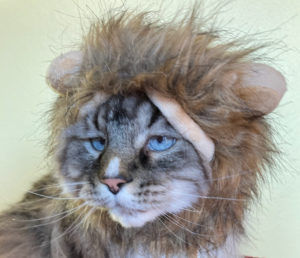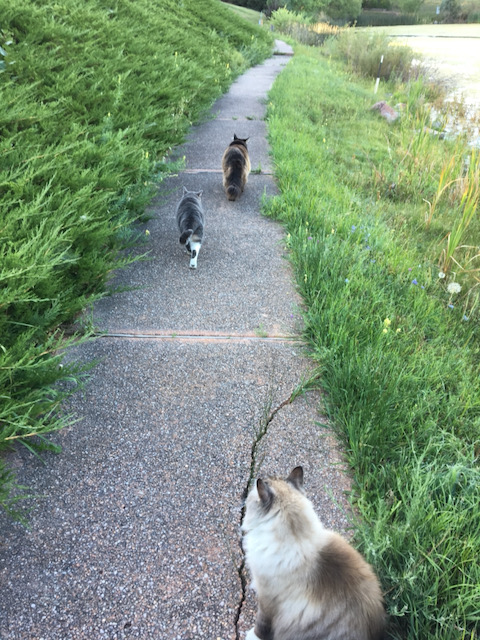A lifelong cat owner, I had an indoor-outdoor cat as a child. I continued to have cats as I grew older, gradually spending more and more time with them. When I took a break from work for two years to sail from California to Maryland via the Panama Canal, I took my two siamese cats with me and I am relieved to say that they both made it home and lived to be 17 and 18 years old.
When we moved to Colorado, I began to supervise my cats’ outdoor activities due to the number of predators that were around. For several years, we lived in a house that bordered on an open space. At night, you could the coyotes howling and hunting in the open space behind the house.
Cats could only go out with a human supervisor. At the time, I had two long haired cats that would follow me and stay close by while I gardened; our domestic short hair preferred to stay indoors exclusively.

Around this time, I read My Pride and Joy by George Adamson of “Born Free” fame. Adamson was known for rehabilitating captive lions and returning them to a wild existence. He would take groups of these captive-raised unrelated lions and establish artificial prides. One of the daily exercises the “pride” engaged in was a walk. I wondered if walking cats together would help them get along better.
And so started the ritual of walking cats every morning. The townhomes I live in are an impromptu retirement community. The grounds are spacious with older trees and a pond. The roads in the complex are quiet with little traffic.
After several attempts at walking cats on leashes and having to let them climb trees with leashes dangling as they tried to escape the neighbors’ dogs (often on leashes), we changed to a “freedom” walk. The cats were not leashed and followed me around. I reinforced this behavior with treats.
(Update: I have found that I have to leash Gus, my formerly feral cat. He is still inclined to roam and get into cat fights.)

None of my cats are littermates. Some of the cats engage in friendly behavior (grooming each other) but others are aloof from their housemates indoors. Social Groups of Cats
Being outside is a different story. The four cats will band together, for example, if a strange cat approaches. They don’t fight amongst each when the intruder shows up.
One cat may growl at another if he is further away, but once close up, they will touch noses and confirm that they are part of the same group.
George Adamson established “artificial” prides; we establish “artificial” colonies when we house unrelated cats together. Like a colony of free-roaming cats, the indoor “colony” has its own signature scent which the members recognize each other by.
I guess it is a case of
“Better the Devil You Know than the Devil You Don’t”,
or, from the feline purrspective,
“Better the Devil who Smells Like You than the Devil Who Doesn’t”

